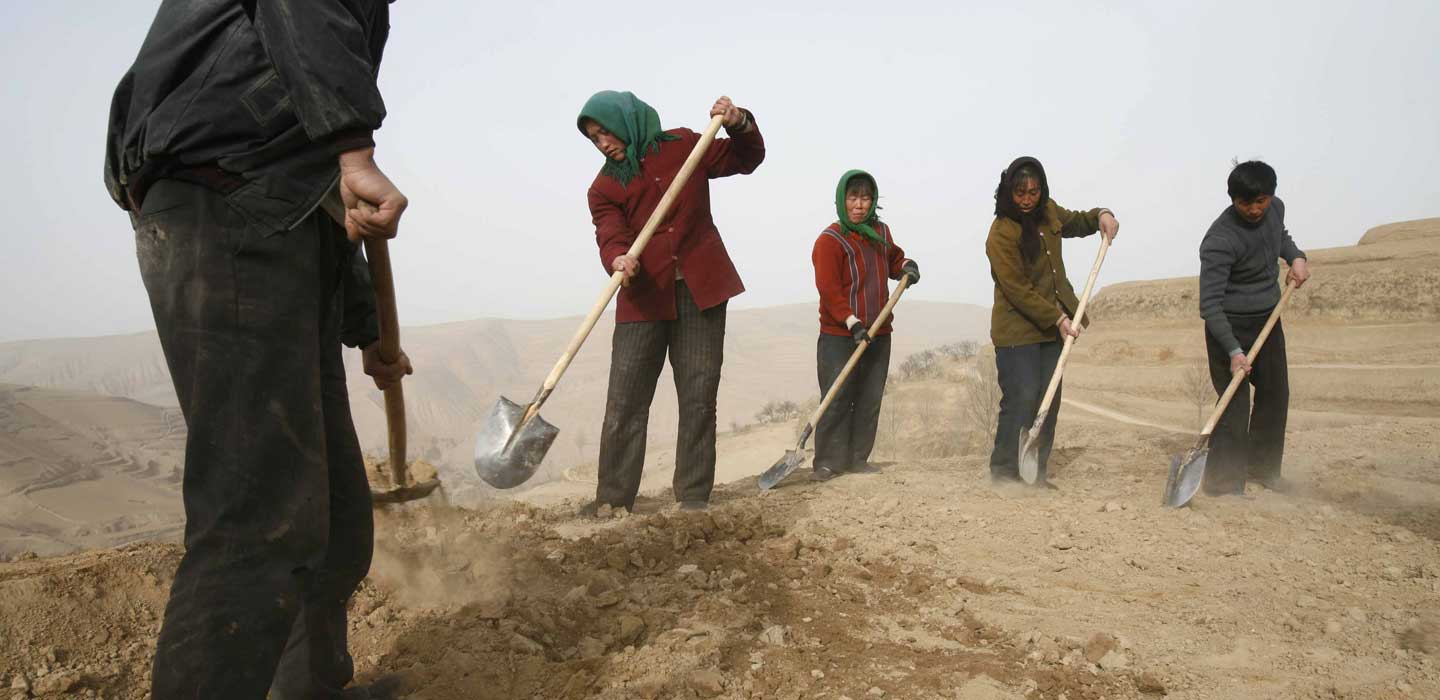Is China getting greener?
IFAD Asset Request Portlet
Asset Publisher
Is China getting greener?
Estimated reading time: 4 minutes
China is the world's largest greenhouse gases (GHG) emitter, yet it is also the world's leading country in energy production from renewable sources.
One fifth of land resources are polluted, overuse of water resources has depleted water tables, and air pollution is the fourth most important factor to death in China. Yet, China has increased its yearly expenditure for environmental protection to approximately 1.2 per cent of its GDP today - a figure in line with that of Western European countries.
Is China getting greener after having been dark for many decades?
The environmental costs of China's rapid economic development
Let me start by recalling the impressive progress and achievements China made over the past 40 years. GDP per capita grew more than 40 times. China is today the second largest economy in the world. And, most importantly, China succeeded in translating its economic achievements into social benefits: 800 million people have been lifted out of extreme poverty, life expectancy at birth has increased significantly, under-five mortality rates dropped drastically, and universal and free education is guaranteed throughout the country.
However, such rapid economic growth had a significant impact on China's natural resources. About one-fifth of land resources in China have been polluted. About 40 per cent of its land area has been degraded. Overuse of water resources has depleted water tables. Globally, China has become the largest GHG emitter.
China's third "tough" battle: pollution control and environmental protection
China is aware of the environmental toll it had to pay for such rapid growth, and over the past years it has taken several measures to put its growth model on a more sustainable path.
Pollution control and environmental protection have been indicated by the Government as one of the three "tough" battles for China, demonstrating the highest political commitment to this agenda. The current 13th Five Year Plan, the main planning document of the Government, includes binding targets for several key environmental parameters, from energy consumption to carbon emission, from air quality, to forest coverage - among other parameters. Investments in ecological conservation and green technologies have increased: according to the World Bank, China spends approximately 1.2 per cent of its GDP to environmental protection each year, a figure in line with that of Western European countries. China is now the world's leading country in energy production from renewable sources.
As a result, several environmental indicators have shown important improvements. According to Government statistics, cities that implemented new air quality standards saw their average concentration of PM2.5 reduced by 31 per cent from 2013 to 2016. The 2020 target to reduce carbon intensity by 40-45 per cent has already been reached in 2017. Forest coverage has increased by 21 million hectares in 10 years.
Is China getting greener? The remaining challenges
Despite the undoubtable progress, shifting from a fast but not sustainable to a slower but more sustainable growth requires time, continuous investments, and political commitment.
Air quality has improved in recent years. Yet, air pollution remains the fourth most important factor to death in China, costing, according to OECD, an estimated 7 per cent of healthcare expenditures and an estimated 8.6 per cent of the GDP for premature deaths.
Although urban and industrial waste water treatment led to several improvements in water quality, groundwater pollution has emerged as a major issue, affecting residential water use and agriculture production.
The costs of soil cleaning are enormous: according to the Economist, cleaning China's 250,000 square kilometres would cost US$1,000 trillion - more than all the wealth in the world.
Despite the remarkable progress in reducing CO2 intensity in recent years, it will still take several years before China will start reducing the total amount of CO2 produced because of the projected growth in energy demand, the still relatively high share of coal in the current energy structure, and the economic and political costs of restructuring a heavy polluting sector.
What can be done?
China is on the right track to becoming "greener", but recent efforts need to be continued, and possibly further enhanced.
Investing in pollution control and environmental conservation. According to World Bank's estimates, China already spends US$130 billion on environmental protection each year. However, according to Government estimates, the country would need up to US$350 billion annually of green financing through 2030. The investment is significant, but the expected rate of return (a reduction of environmental degradation and resource depletion by 6 per cent of the GNI by 2030, according to the World Bank) would justify the investment.
Improving environmental information. Having solid data to understand the sources, impacts, and costs of pollution and environmental degradation is the precondition for making good decisions.
Diversifying environmental policy instruments. According to the World Bank, China's past approaches focused on "end-of-pipe" control mechanisms. However, such mechanisms could not sufficiently support prevention. China mainly relied on "command-and-control" measures for environmental protection, but market mechanisms (e.g. pricing to better capture environmental costs, environmental taxes, trading systems for carbon and energy use, etc.), which have been relatively underutilized, can offer a different, and possibly more efficient policy tool for environmental protection.
Lastly, continuous political commitment to pollution control and environmental protection. The Government has already demonstrated strong commitment to a more sustainable and green development. Such commitment should continue and possibly be enhanced, with more ambitious goals and targets. As already demonstrated with the battle on poverty, a great vision can lead to great results.
How can IFAD contribute?
Agriculture is both a contributor to and a victim of environmental degradation and climate change. Poor rural households are the most vulnerable to the effects of environmental degradation and climate change.
IFAD, through its investments, does contribute to make agriculture more sustainable by, for instance, promoting agricultural technologies and practices that are less polluting and utilize land and water resources more sustainably, introducing crop varieties that are more resilient to the effects of climate change, building infrastructures that improve water efficiency, and promoting renewable energy technologies. It also contributes to make rural poor more resilient and less vulnerable to environmental degradation, natural disasters and the negative impacts of climate change by enhancing their capacity and opportunities to improve and differentiate their livelihoods and income generating opportunities.
Read more about IFAD and China and Climate and environment.
Publication date: 10 June 2019